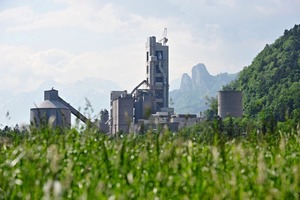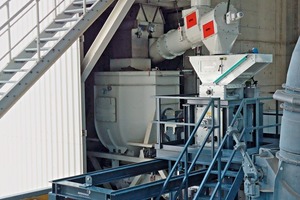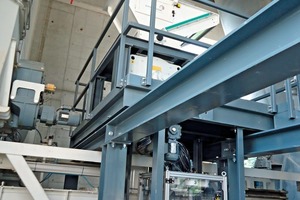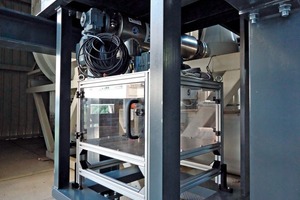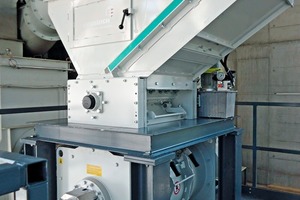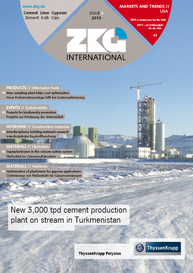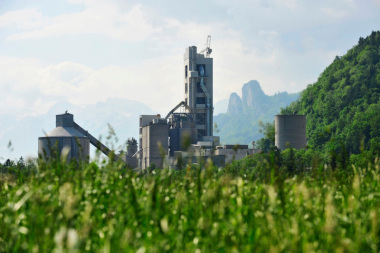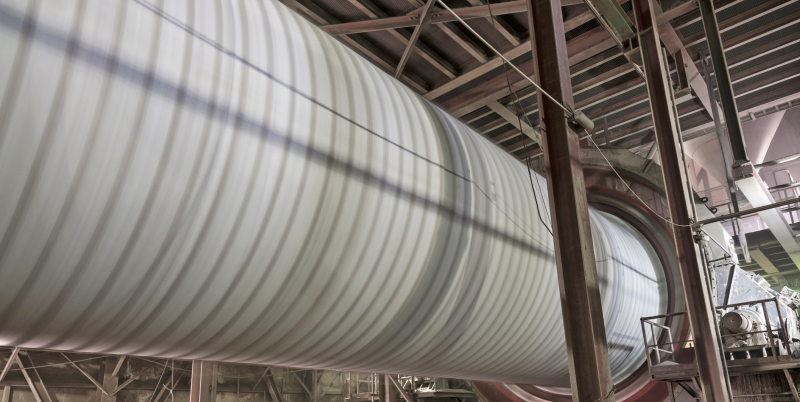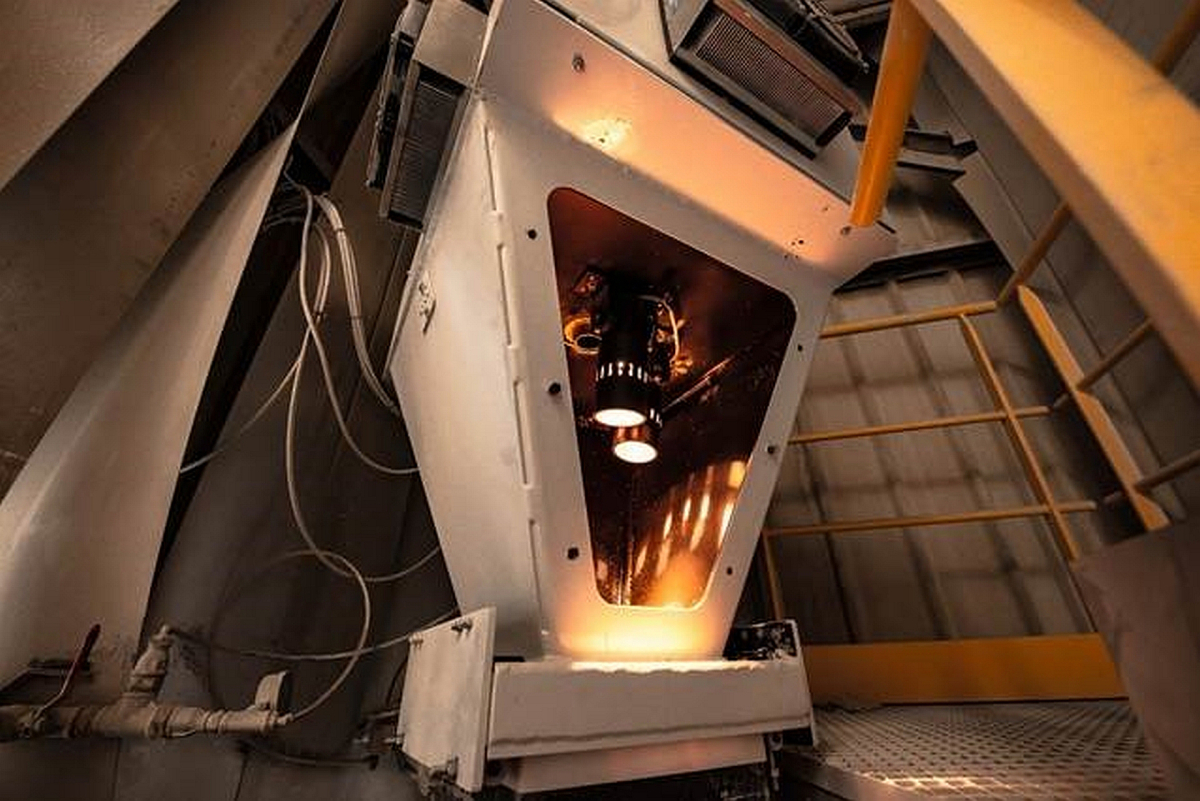New sampling plant helps cost optimization
“Until now an employee had to remove RDF materials from the feed manually and bring it to the labo-ratory for shredding and reduction”, explained Peter Kraihamer who is responsible at Leube for maintenance, planning and safety. This was apparently a problem, because “Every employee took different quantities of material in differing numbers and at differing times. Therefore it was not possible to assume any standard in the sampling, as it is meant to represent a cross section from a particular quantity of material.”
In order to make it possible to carry out a precise analysis, Erdwich Zerkleinerungssysteme GmbH was charged with constructing a purpose built plant. “The requirements were extremely precise”, stated Andreas Ostermeier, project leader at Erdwich. “From each truckload of 90-100 m3 of RDF we were required to extract several samples of around 60 l of material and reduce it to component pieces of a size which could be analyzed in the laboratory”, continued Ostermeier. Additionally, a specified sampling quantity had to be prepared, representative of the entire truckload, which should then be delivered automatically by tube post to the laboratory. For that purpose, each of the 60 l material samples, after they have been shredded, are mixed to a homogenous mass, and from this a sample of 0.5 l is to be automatically extracted for the laboratory. This process cycle is repeated several times, so that precise conclusions can be drawn regarding the delivered RDF. Only in this way is it possible to precisely establish the calorific value and thus the optimization of the cement production costs.
In order to facilitate the taking of representative samples, Erdwich constructed a special shredding plant to this end. Up until now, the RDF was transported on a conveyer belt to a weighing hopper bunker. From there, via a double screw conveyor, it was fed directly into the incinerator. The sampling plant was now installed directly between the existing feeder and the weighing hopper bunker: After the conveyor belt, a pneumatically driven discharge hatch was installed. This opens for a short space of time until the required 60 l have been extracted and then swings closed. The material is then fed from the discharge hatch using a screw conveyor to an Erdwich single shaft shredder of the type M600/1-600. “In order to reduce the throughput time and to optimize the material feed, even for bulky material, the shredder is fitted with a hydraulic feed press”, explained Ostermeier. An integrated sieve regulates the grain size of the shredded material, since only particles of a particular size are suitable for laboratory analysis.
In order to save on further expensive feed technology and to save space, the material thus reduced falls freely into a mixing drum, where the sample material is mixed to a homogenous and representative mass. “If this were not done, our RDF suppliers would immediately question the results of the analysis”, according to Kraihamer. When the material is sufficiently mixed, it leaves the drum via a flap, again in free fall.
In the next step, a screw feed for removal of the required 0.5 l sample is used. The remainder is returned to the incineration process, again by free fall. “As soon as the sample container collection carousel is full, all the containers are removed and can be transported to the laboratory via tube post”, Ostermeier explained. “In order that each sample is definitively assigned to its associated truck load, and thus labelled, the carousel filling device and the containers have RFID chips and read and write heads.”
The RDF material, which is difficult to handle, presented the greatest of the problems in preparing a laboratory sample. “The main component part of the RDF is plastic. Since its source is business waste, almost every kind of impurity can be expected, such as wood, metals and mineral elements or glass”, according to Ostermeier. However, the size parameter for the largest grain particles is 150 x 150 mm for 2D and 25 x 25 x 25 mm for 3D particles. The reduction of the material of various compositions and its partial dampness places extreme loads on the blades. Therefore, they are prepared with great resistance to wear and with a special geometry.
A further challenge was the requirement that the whole plant be insensitive to dust, water, snow, ice and temperature changes, as it would be exposed to all the weather conditions typical for that location, with practically no protection. “So, we had to use special electronic components, so that controls such as pneumatically driven switching flap, various contents and position controls, electric motors, heating or pneumatic drives, could all be operated outside in all weathers”, said Ostermeier. In addition, heating elements were integrated in order compensate for the occasional extremely low temperatures of up to -30 °C.
The space available also demanded additional tailoring of the plant as the sampling plant had to be integrated into the existing system at a height of 40 m, whereby Leube insisted on the shortest of times for the adaptation in order to avoid disturbing the everyday operation as little as possible. Thus, it was necessary to design an extremely space-saving version in this case. One result was that almost the entire plant was placed directly over the existing double screw conveyer, resulting in minimal additional free space requirements.
“The plant supplied by Erdwich has overall measurements of 5.85 m in length, 5.34 m in width and 5.56 m in height and basically consists of a pneumatic sample extractor, a feed screw, a shredder, a mixer, a sample extraction screw and a sample collector together with the associated plant frames, ladders and stages”, summarized Kraihamer.
“In order to avoid needing to remove the entire sampling plant in the event of maintenance to the existing double screw feed, the plant was installed on a travelling frame”, explained Ostermeier. In addition, the individual components were designed so small and light or to be easily unscrewed or separated, so that they could be transported using the existing hoist to the construction location. “Despite the very wide ranging special requirements, for the most part we were able to use standard components even though the finished plant is an individual special solution”, said Ostermeier in summing up.

